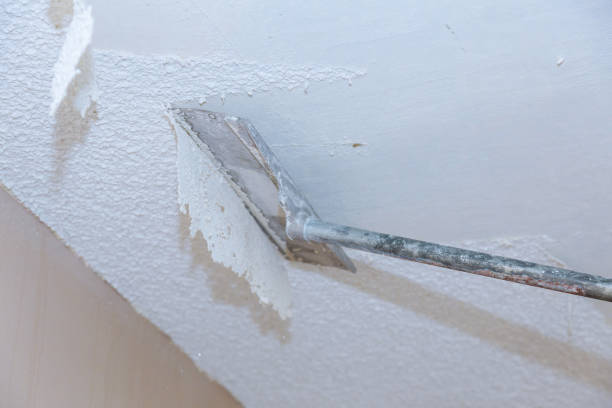Popcorn Ceiling Removal: A Step-by-Step Guide


If you own a house or apartment, you may have encountered an unusual textured ceiling. This could be a popcorn or cottage cheese ceiling. Other phrases that builders use to describe the bumpy ceiling include acoustic or stucco.
Stucco ceilings were a practical and affordable construction solution that homebuilders created by mixing ceiling paint with various materials. The materials that added the texture include:
But for the most part, popcorn ceilings fallen out of favor with current homeowners. If you currently have a popcorn ceiling and don't know what to do, read on to find-out AFC Home's expert take on the pros and cons of having a popcorn ceiling. Additionally, the key steps to a safe and proper popcorn ceiling removal process.
The textured stucco ceiling presented a variety of advantages that contributed to its enhanced appeal more than fifty years ago. These benefits include:
However, popcorn ceilings have become increasingly unpopular over time. Some of the reasons that are contributing to its decreased appeal include:
Here are a few safety measures you can consider while working on this home renovation project:
Popcorn ceiling renovation exposes you to a lot of dust and debris. This can be dangerous if the ceiling contains lead-based paint or asbestos. Wearing the right popcorn ceiling removal safety equipment protects your body from these harmful particles. The gear includes:
The renovation process can be more hectic without the appropriate popcorn ceiling removal tools for the job. You can even damage the drywall underneath and require extensive repair afterwards. You’ll need a wide, sharp putty knife or specific popcorn scraper to gather the debris as you scrape. After removing the popcorn ceiling texture, you can utilize a drywall taping knife to level up the uneven areas. You also require:
The DIY popcorn ceiling removal project can be a pretty messy job. Failing to prepare your space can leave you with a difficult cleanup process later. Start by removing all the furniture and interior decor. You also need to cover up the floor and walls with either a tarp or plastic sheeting. If you’re working in an isolated room, properly seal it up to prevent dust from spreading to other areas.
Remember to switch off the circuit breaker before working on the ceiling fixtures or fans. This prevents any interference while you scrape up the wet popcorn debris. Alternatively, you can consider removing these fixtures beforehand to avoid water splashing on the electric components.
Once you’re through with the ceiling renovation, there’ll be plenty of materials that need disposal. Have your durable and properly labelled disposable bags ready to enable a safe cleanup. You’ll need to check with local guidelines on the best way to manage hazardous waste.
Removing your popcorn ceiling is a fairly simple process that you can start by:
Removing the popcorn ceiling may seem fairly simple at a glance. However, there's a major safety concern to consider. For homes built prior to the 1980s, asbestos could pose a serious health risk.
It's vital to have an expert contractor inspect your house and decide on the method for removing the popcorn ceiling. They can perform tests to check for asbestos and other hazardous materials before commencing any renovation projects.
If you’re removing popcorn ceilings from your bathroom, for example, consider contacting a trusted bathroom remodel contractor in your area.

Coverage not available in CA, WA and HI